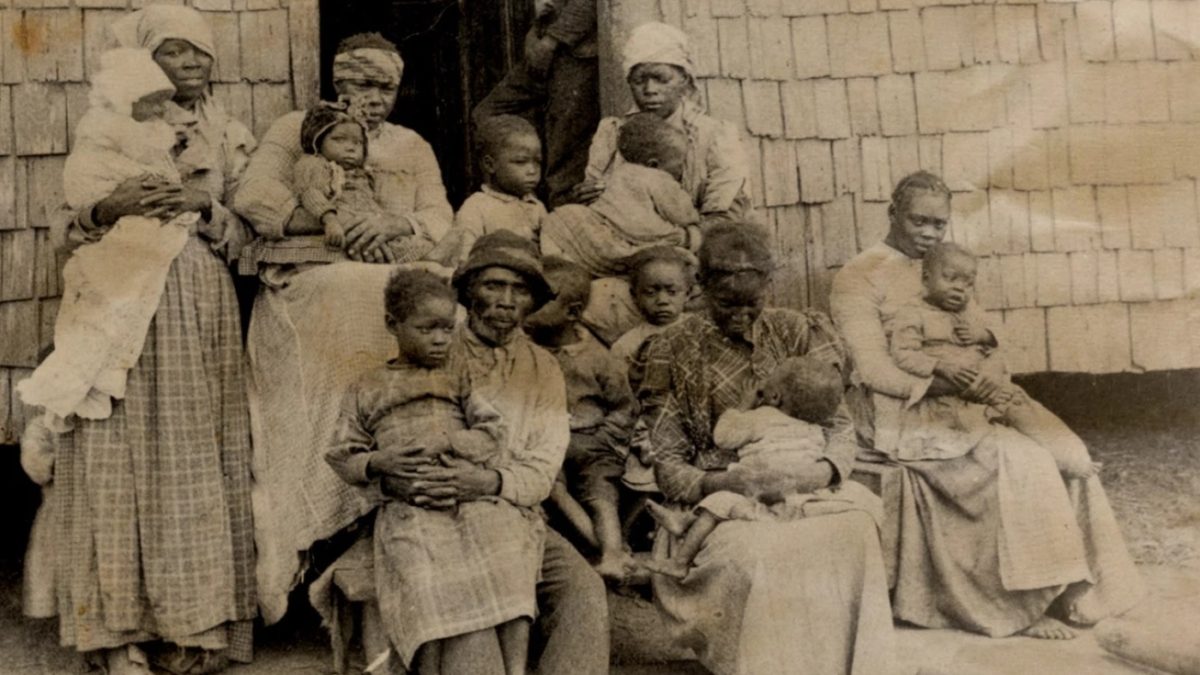
In 2017, historian Judith Giesberg and her team of graduate student researchers launched a website called Last Seen: Finding Family After Slavery. It now contains over 4,500 ads placed in newspapers by formerly enslaved people who hoped to find family members separated by slavery. The earliest ads date from the 1830s and stretch into the 1920s.
Giesberg says that when she’s given public lectures about this online archive of ads, the audience always asks “the“ question: “‘Did they find each other?'” Giesberg writes:
I always answer the question the same way. And no one is ever satisfied with it. “I don’t know.”
Giesberg’s new book, called Last Seen: The Enduring Search by Formerly Enslaved People to Find Their Lost Families, is her more detailed response to the question. In each of the 10 chapters here, she closely reads ads placed in search of lost children, mothers, wives, siblings and even comrades who served in the United States Colored Troops during the Civil War.
Giesberg isn’t trying to generate reunion stories. Although there are a couple of those in this book, Giesberg tells us the cruel reality was that: “The success rate of these advertisements may have been as low as 2%.”
Instead of happy endings, these ads offer readers something else: they serve as portals into “the lived experience of slavery.” For instance, countering the “Lost Cause” myth that enslaved people were settled on Southern plantations and Texas cotton fields, the ads, which often list multiple names of white “owners” as a finding aid, testify to how Black people were sold and resold.
The ads that hit hardest are the ones that illuminate what Giesberg refers to as: “America’s traffic in children.” She writes: “Selling children away from their mothers was the rule of slavery, not the exception.”
Clara Bashop’s story opens Last Seen. Bashop had been searching for her daughter and son for 30 years when she took out an ad in 1892 in the African American newspaper the Chicago Appeal. Here are some portions:
I wish to find my daughter Patience Green. I have no trace of her since she was sold at Richmond, Va, [in] 1859. She was then 12 years of age. John William Harris my son went with some servants … (after the surrender) … He was 14 years old … Both … belonged to Dick Christian (in name only), by whom they were sold.
The language of Bashop’s ad is direct and somewhat defiant. Giesberg comments on the words “in name only” that Bashop appended after the name of Dick Christian, the man who “owned” her children. Giesberg writes: “Against this legal right, Clara Bashop asserted a moral and emotional one.”
In comparison, Giesberg unpacks the language of a human-interest story aimed at white readers about Bashop’s search. That story ran in the New York World newspaper. There, Patience is described as the “Missing Child” of an “Aged Mother” and Dick Christian is “a country gentleman.” Giesberg writes that “white papers everywhere were publishing similar stories that threw a thick blanket of nostalgia over the history of slavery.”
Another ad that speaks volumes is one posted in 1879 by Henry Tibbs, in the “Lost Friends” column of a New Orleans paper, the Southwestern Christian Advocate. It opens: “MR. EDITOR — I desire some information about my mother.” Tibbs recalls being put in a jail with other boys prior to being sold away. “I cried” he writes. Tibbs says he was told that if he “would hush [the slave trader] would bring my mother there next morning, which he did; … Mother then brought me some cake and candy, and that was the last time I saw her.”
Throughout Last Seen, Geisberg steps back from these individual ads to give readers the larger historical context that made them necessary. For instance, she reminds readers that no federal agency existed to help freed people locate loved ones after the Civil War ended. Instead, there were things like “the grapevine telegraph,” which she describes as — “a sophisticated system of … surveillance by which enslaved people kept track of one another …” And there were the ads, many of which were read aloud in Black churches. Those ads testify to the inner strength of people like Tibbs, who was still placing ads in search of his mother when he was 55 years old.


